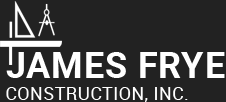How to Deal with Mold Removal in Indianapolis IN
Sudden unfortunate events such as tornadoes, sewage backup and flooding, plus its related damages like water damage and mold growth are clearly devastating. But no matter how much a homeowner avoids destruction to one’s home, such disastrous events can still happen since they can be caused by nature. Even homeowners of a highly-developed city such as Indianapolis can still experience them. The city’s climate has been described to be humid continental climate, so in some months or seasons when the city experiences high humidity levels, a home may experience mold growth. Or when raining that causes flooding occurs, mold growth can be an after effect.
When mold growth and other types of water damage happen to a home, there is a big decision to make. You as the homeowner should make an assessment whether you should remove the mold growth yourself and clean the infested area or call for help. Mold removal is usually a service offered by your local water damage contractor along with water damage cleanup, flood cleanup, and sewage backup cleanup.
The tricky part to handling mold growth is that it may or may not have any effects to you and your family’s health. However, when it does have an effect to anyone’s health, it can be severe and even deadly. The arising number of severe mold cases plus the new health regulations covering molds being passed should be considered when making the big decision of whether or not to hire a mold removal contractor. Whatever you decided to do however, you must know the qualities of mold and how a mold removal is done.
Mold, such as the dangerous black mold, is a type of fungi that can trigger allergies like asthma, skin itching and other respiratory diseases. Persons who have been diagnosed with certain respiratory illnesses can be more prone to an allergic reaction. This type of fungi thrives in humid environments and can start to grow in wet surfaces, so a home is susceptible to mold growth after a flooding incident. The surface that mold grows on however, is not just the thing that a homeowner should avoid. Mold spores can become airborne and inhaled.
Mold removal involved three processes: remove the mold growth, cleanup the infested surface and surrounding environment, and a complete drying process. When removing mold growth, a person should have the proper clothing, cleaning tools and knowledge of how to do the process. Proper clothing should include coveralls, gloves, protective eye gear and a mask while proper tools may include scraping tools, brushes, detergent and disinfectants.
When removing mold growth, keep in mind that porous materials like foam where mold have grown may not be completely cleaned. Mold can seep deep into pores so it will be likely that porous infested materials need to be thrown away. For non-porous surfaces, first mold growth needs to be scraped off; the surfaced needs to be cleaned with detergent and disinfectant like bleach; and the surface needs to be completely dried after. In most cases, the room where the mold infestation happened needs to be cleaned too; air cleaning may be done as well.
Those who are not sure if they can resolve the problem completely should hire a professional for a thorough mold remediation process.

